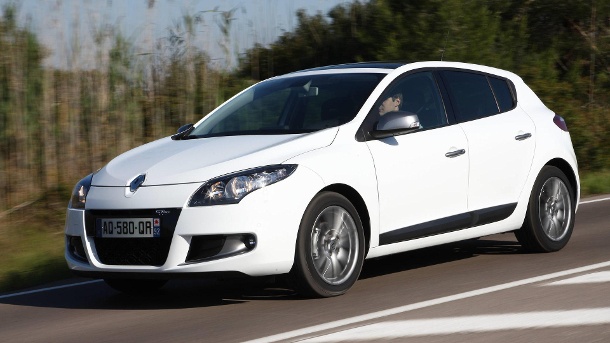Do you want a used compact car? Golf? Nope? Then there is the A3 or Astra or Octavia or i30. The choice is huge. If you are Francophile, you might also want to look at Renault's Mégane.

The Mégane is Renault's compact class - in other words: one of the main competitors of the VW Golf from France. If you want a used vehicle that is as durable as possible, you should choose a vehicle of the current generation. The predecessor made significantly more mistakes in the general inspection (HU).
Model history
The first generation of the Mégane came onto the market in 1995; the third and fourth editions considered here started in 2008 and 2016, respectively. Renault carried out model updates in 2012, 2014 and 2020 (a plug-in hybrid has been around since then).
Body styles
The third generation was built as a class-typical hatchback, as a Grand Tour station wagon, as a coupé and as a folding roof convertible CC. Its successor is only available in Germany as a hatchback and grand tour.
Dimensions
Mégane III : 4.30 m to 4.56 mx 1.80 m to 1.81 mx 1.47 m to 1.51 m (LxWxH); Trunk volume: 377 l to 1,595 l
Mégane IV: 4.36 m to 4.63 mx 1.81 mx 1.45 m (LxWxH); Trunk volume: 402 l to 1,504 l
Strengthen
Fresh exterior design and French touch in the interior: From a German perspective, the Mégane offers a little more individuality. At the first HU appointment, the steering still performs well, but the brakes are particularly resistant: "Brake lines and hoses can be trusted into old age," according to the "Auto Bild Tüv Report 2021".
There are hardly any above-average deficiency rates here. The function of the foot brake is praised up to the third HU. Oil loss rarely occurs, the exhaust holds up well.
weaknesses
The Mégane IV has an increased percentage of defects in the axle suspension with the first general inspection. Even with the Mégane III, the chassis components are no better, at the second appointment the inspectors have to make too many complaints about the axle springs and dampers as well as the brake discs.
From the fourth HU onwards, there are often problems with the parking brake. The Mégane often fails the emissions test (AU) at the age of five, seven and nine years.
Engines
Mégane III: petrol engine (four-cylinder with front-wheel drive): 85 kW / 115 PS to 201 kW / 273 PS; Diesel (four-cylinder with front-wheel drive): 66 kW / 90 PS to 120 kW / 163 PS
Mégane IV: petrol engine (four-cylinder with front-wheel drive): 74 kW / 100 PS to 221 kW / 300 PS; Diesel (four-cylinder with front-wheel drive): 66 kW / 90 PS to 120 kW / 163 PS; Plug-in hybrid: 116 kW / 158 PS (system performance of petrol and electric motor)
Prices
Market prices according to the "DAT market mirror" of Deutsche Automobil Treuhand with statistically expected kilometers in each case:
Mégane Coupé Cabrio 2.0 TCe 180 GT (2014) ; 132 kW / 180 PS (four-cylinder); 99,000 kilometers; 10,450 euros
Mégane IV 1.2 TCe 130 Energy Intens (2016) ; 97 kW / 132 PS (four-cylinder); 74,000 kilometers; 10,150 euros
Mégane IV 1.5 dCi 90 Energy Experience (2017) ; 66 kW / 90 PS (four-cylinder); 74,000 kilometers; 9,050 euros
Breakdown behavior
The Mégane of the first registration years 2009 and 2010 does well in the ADAC breakdown statistics: "The other years are all in the midfield, only 2016 lands just behind the midfield," writes the club.
"Low defect rates": The Mercedes C-Class in the used car check
Important when selling and buying: Schwacke list reveals - that's how much a car is worth
Uncovering weaknesses: the best tips for buying a used car
The ADAC mentions weak batteries in cars from the first registration years 2014 to 2016 as the main breakdown focus.
